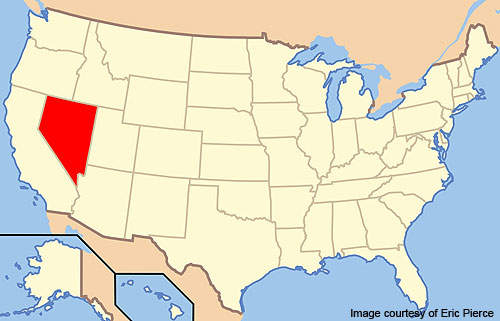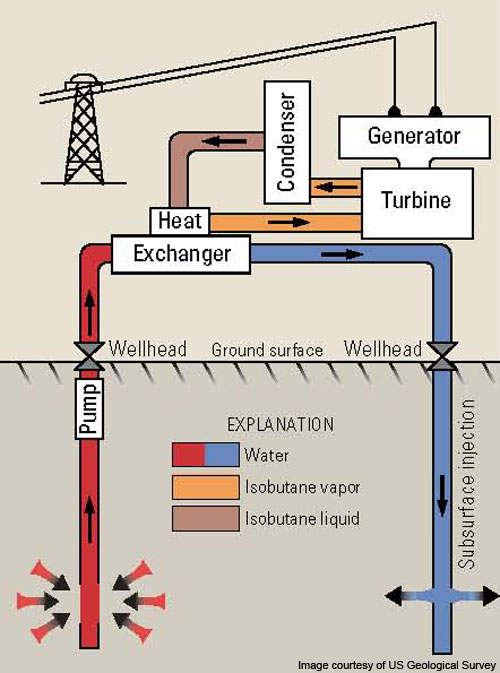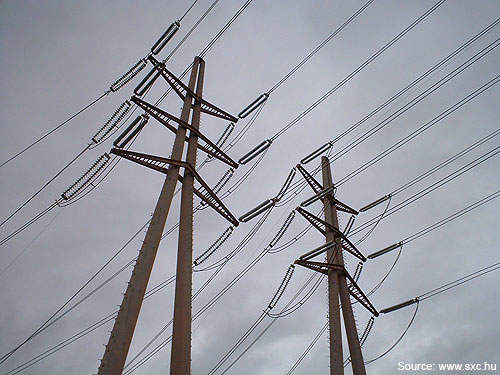The Patua Geothermal Plant is a new 60MW modular binary cycle power plant under development in the Patua region of northern Nevada, USA. It is owned by Gradient Resources (formerly known as Vulcan Power Company).
The Patua plant is the company’s first geothermal power plant and the largest binary plant ever constructed to date. The plant’s output will be supplied to Sacramento Municipality Utility district under a 21-year power purchase agreement (PP) that was signed in April 2010.
The project will be developed in three stages. It is currently in the first stage and is underway drilling of the production wells. The actual construction of the plant is expected to begin in the second quarter of 2011 with commissioning scheduled for the third quarter of 2013.
Project details
The plant will be situated in a high desert area approximately 10 miles away to the east of Fernley.
Gradient Resources acquired the land leases from Department of the Interior (DOI) and Bureau of Land Management (BLM) to drill and operate the geothermal well pads, lay fluid pipelines and transmission lines and to construct the power plant. The company has also secured rights from the private land owners to use the geothermal resources near the project area, located in the Churchill and Lyon Counties in Nevada.
With a net nameplate capacity of 120MW, the plant will provide base load energy round the clock except during planned and forced shortages. It will initially produce 500GWh a year, which will, in due course be ramped up to 1,000GWh.
The plant will feature an advanced supercritical Organic Rankine Cycle and improved air cooling technology.
Drilling on the project recommenced in February 2010, after the second equity investment of $108m was received from Denham Capital. The project has so far completed preliminary activities such as drilling the core holes and full size production wells. The site already has two rigs and a full size production well.
Development
The project’s environmental assessment was jointly prepared by BLM’s Carson City District Office and Reclamation in accordance with the national Reclamation / BLM Interagency Agreement of December 1982.
BLM oversees the approval of geothermal facilities located on the lands managed by the Bureau of Reclamation.
The engineering, procurement and construction (EPC) contract for the project was awarded in March 2011 to Benham Constructions, a wholly owned design-build subsidiary of Science Applications International Corporation’s (SAIC).
SAIC has tied-up with Texas-based TAS Energy to provide technological assistance for the project.
Grid and transmission
The power produced at the plant will be transmitted via 120kV transmission lines to the national grid. The Bureau of Reclamation has signed a ‘Finding of No Significant Impact’ for the Environmental Assessment and issued a 20-year licence authorising the company for the right-of way transmission lines.
The right-of-way transmission line is 18,480ft-long and 75ft-wide. It will connect the power plant to a new substation in Fernley.
Technology
Binary technology allows the use of low temperature geothermal liquid. In a binary cycle power plant, heat from the underground water is used to produce steam in the working fluid. Also known as second fluid, this liquid is filled inside the pipes placed adjacent to the geothermal pipes.
The steam generated by the secondary fluid is used to power the turbine generator to rotate and produce electricity.
The heat exchanger placed between the pipes and the steam turbine transfers heat from the geothermal water to the working fluid. The geothermal liquid is kept unexposed to air and sent back into the injection wells.
Nevada power market
Nevada is rich in geothermal resources. It has the greatest geothermal potential in US and is ranked second in terms of operating capacity, first being the state of California.
As of August 2010, Nevada had 20 geothermal power plants with an installed capacity of 430MW. The state has 86 projects currently under development which are expected to boost the capacity from an additional 2,120MW to 3,686MW.






